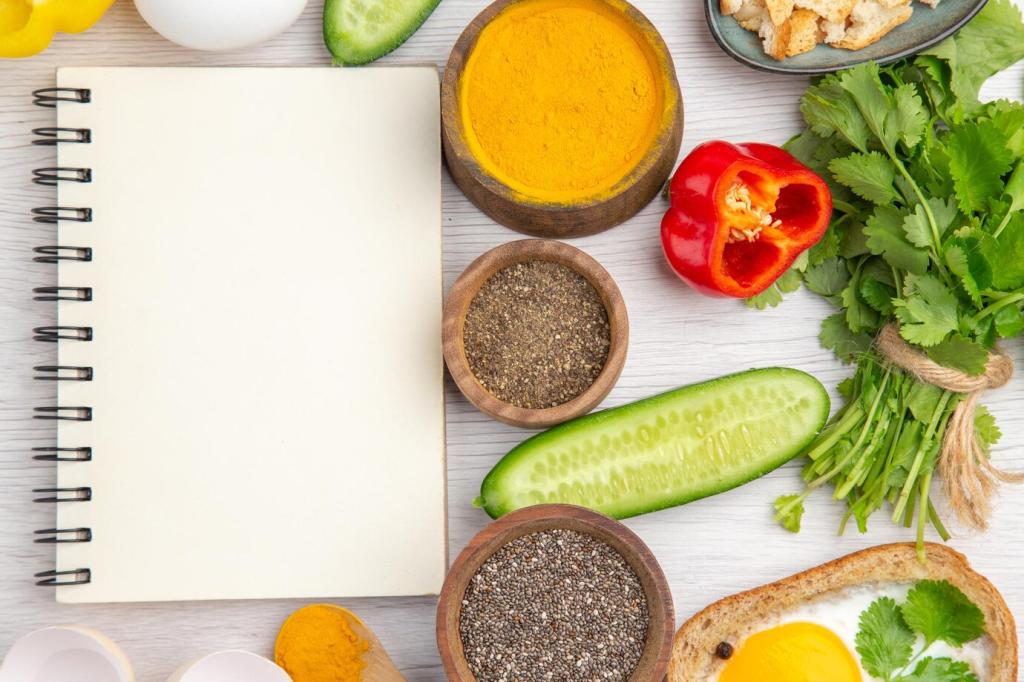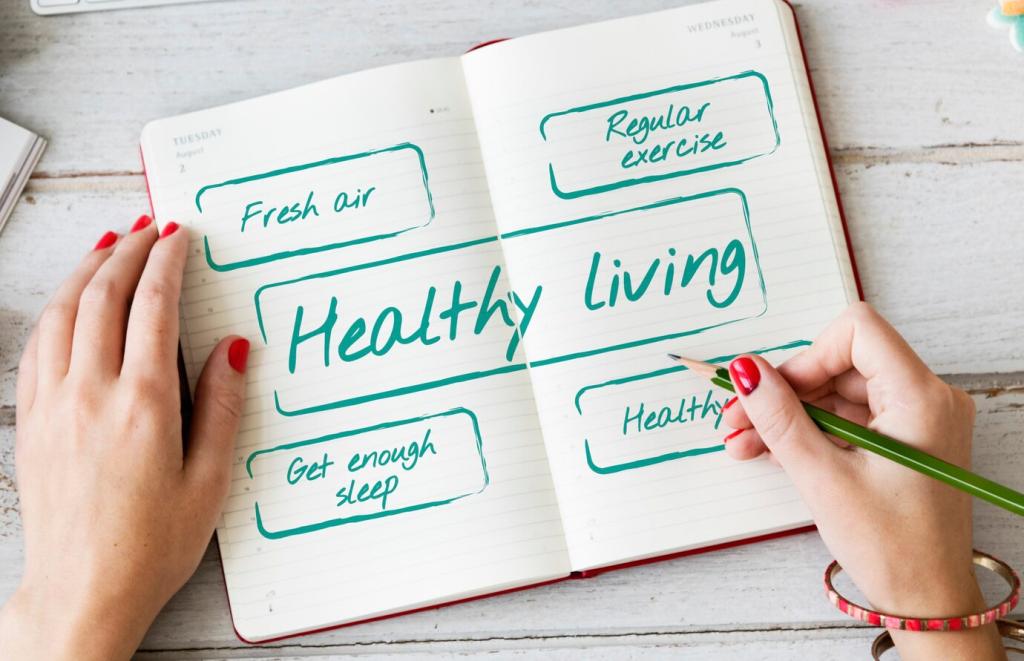Fuel Your Finish: Balanced Meal Planning for Optimal Athletic Performance
The Foundations of Athletic Fueling
Aim for carbohydrate-centered plates to support workload, consistent protein across the day for muscle repair, and purposeful fats for satiety and hormone health. Many athletes thrive around 45–60% carbs, 20–30% protein, and 20–30% fat, adjusted for sport demands and personal response.
Pre-workout plates made simple
Build a base of easy-to-digest carbs with a modest portion of lean protein and low fiber if training soon. Think oatmeal with banana and yogurt, or rice with eggs and sautéed zucchini. Comment with your session time and we’ll customize ideas.
Post-workout recovery bowls
Combine fast-acting carbs, quality protein, colorful produce, and fluids. A quinoa, roasted sweet potato, chicken, and citrus slaw bowl restores glycogen, repairs muscle, and rehydrates. Add a glass of milk or a smoothie for convenient extra protein and micronutrients.
Micronutrients and Hydration for Balanced Plans
Electrolytes that keep messages moving
Sodium replaces heavy sweat losses and supports fluid balance; potassium and magnesium assist nerve signals and muscle function. Map your sweat rate, flavor your water lightly for palatability, and practice your plan in training. Tell us your climate and schedule for tailored electrolyte targets.
Iron, calcium, and vitamin D: the performance trio
Low iron can blunt oxygen delivery and energy, especially for endurance athletes. Calcium and vitamin D support bone health under repetitive load. Include beef or lentils, leafy greens, dairy or fortified alternatives, eggs, and sunshine. Ask your clinician about ferritin testing if fatigue lingers.
Smart hydration strategy without overdoing it
Drink to a plan informed by thirst and session length, aiming to finish within about two percent of starting body mass. Use sports drinks during long, hot workouts, and plenty of produce-rich meals afterward. Post your toughest session, and we’ll sketch a hydration blueprint.

Meal Prep, Grocery Skills, and Budget Wins
Cook anchors once, mix all week. Roast two trays of potatoes, bake chicken thighs, simmer a pot of beans, and chop a rainbow of vegetables. Rotate sauces—pesto, salsa, tahini—to keep flavors fresh while maintaining performance-friendly balance.
Meal Prep, Grocery Skills, and Budget Wins
Organize your list by store sections: produce, grains, proteins, dairy or alternatives, pantry, and hydration. Add frozen fruit, canned fish, and microwavable grains for safety nets. Comment with your favorite store, and we’ll build a fast, budget-friendly route together.
Stories From the Field: Balance That Changed Races
Maya’s half-marathon breakthrough
Maya added a carb-rich breakfast and a tiny pre-race gel after months of mid-race fade. She kept protein steady during the week and bumped carbs before workouts. Result: negative splits, steady mood, and faster recovery. What’s your next race? Let’s plan your plate.
Luis, a defender who stopped cramping
Luis replaced plain water with a sodium-inclusive drink during summer matches, added potatoes at lunch, and salted dinners modestly. Cramping disappeared, late-game sprints returned, and sleep improved. Share your sweat conditions and position; we’ll craft electrolyte and carb timing strategies.
Anika’s plant-based powerlifting pivot
Anika distributed protein across four meals using tofu, tempeh, seitan, dairy alternatives, and legumes, and increased iron-rich foods with vitamin C. Her totals rose steadily, and soreness dropped. Plant-based or curious? Subscribe and ask for our balanced strength-day template.

Endurance versus power: different roads, same map
Endurance athletes prioritize higher daily carbs with steady protein, while power athletes emphasize protein distribution and pre-lift carbs for explosive sets. Both benefit from colorful produce, quality fats, and strategic timing. Tell us your sport, and we’ll tailor your balance.

Weight-class and aesthetic sports with health-first guardrails
Use gentle, periodized adjustments rather than crash cuts. Keep protein consistent, preserve micronutrients, and avoid dehydration tactics that harm performance. Schedule fueling around key sessions. Message us your competition timeline, and we’ll outline a safe, balanced approach.

Youth and masters athletes: age-aware balance
Growing athletes need abundant carbs and calcium-rich foods, while masters may benefit from slightly higher protein and vitamin D attention. Everyone thrives on colorful plants and consistent meals. Comment with age and training load for a fine-tuned, balanced plan.
